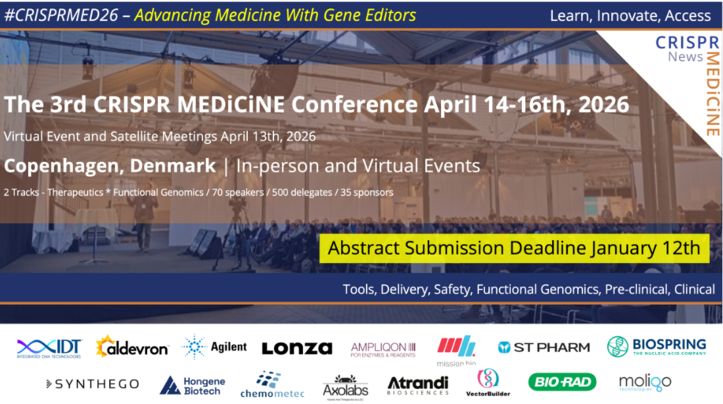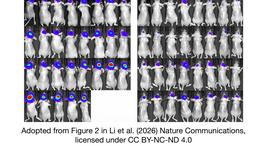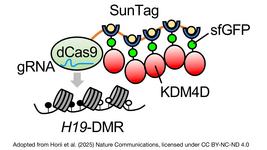CMN Weekly (15 August 2025) - Your Weekly CRISPR Medicine News
CMN Intelligence - The World’s Most Comprehensive Intelligence Platform for CRISPR-Genomic Medicine and Gene-Editing Clinical Development
Providing market intelligence, data infrastructure, analytics, and reporting services for the global gene-editing sector. Read more...
Top picks
- In an article published this week in Nucleic Acids Research, researchers in Denmark and the UK report their attempts to develop a single virus-derived vehicle to deliver complete gene-editing tool kits. They demonstrate the use of engineered lentiviral particles to carry not only Cas9 protein and single guide RNA but also vector RNA, which upon reverse transcription serves as a repair template for gene editing through homology-directed repair (HDR). The ‘all-in-one’ delivery system was capable of targeted correction of pathogenic gene variants in different cell types including the HBB gene in human erythroid progenitor cells as well as HDR-directed editing in haematopoietic stem cells, with reduced off-target effects relative to nucleofection procedures.
- A study led by GeneEditBio co-founder Zongli Zheng has resulted in GenomePAM, an innovative and scalable platform designed with AI integration to accelerate the development of next-generation genome editors for therapeutic use. GenomePAM platform overcomes the shortcomings of traditional methods to identify protospacer adjacent motifs and upon integration of GenomePAM with AlphaFold3, the team discovered several new Cas nucleases with enhanced PAM selectivity. Their findings were published earlier this week in Nature Biomedical Engineering.
Research
- In an article published in Nature Biomedical Engineering, scientists at YolTech Therapeutics and several research institutions in China share recent findings from in vivo gene-editing approaches to treat blood disorders using targeted lipid nanoparticles (LNPs) to deliver mRNA directly to haematopoietic stem cells (HSCs). The team developed antibody-free LNPs that enable efficient base editing of the γ-globin gene promoter, successfully reactivating foetal haemoglobin production and restoring the globin chain balance in β-thalassaemia patient-derived HSCs. This non-viral delivery system eliminates the need for HSC collection or chemotherapeutic conditioning, offering a simplified one-time treatment approach for sickle cell disease and β-thalassaemia with reduced complexity and side effects.
- To gain new insights into the role of tau protein in several neurodegenerative diseases, including Alzheimer’s disease, scientists in the UK, USA, Switzerland, Hong Kong and Italy performed whole-genome, loss-of-function CRISPR screens in human iPSC-derived excitatory neurons, the major neuronal cell type affected in these diseases. They found that monomeric and fibrillar tau are both taken up by human neurons by receptor-mediated endocytosis but involve different routes of entry at the neuronal surface; while low-density lipoprotein LRP1 is the primary receptor for monomeric tau, it contributes less to fibrillar tau entry. Similarly, they found that endocytosis of monomeric tau is dependent on the familial Parkinson’s disease gene LRRK2 but not required for endocytosis of fibrillar tau. According to the authors, these findings implicate LRP1 and LRRK2 in the pathogenesis of tauopathies and Parkinson’s disease and identify LRRK2 as a potential therapeutic target for altering progression of these diseases. Their findings were published this week in EMBO Journal.
- A study led by researchers at Aarhus University in Denmark has developed optimised CRISPR/Cas9-based gene-editing strategies for treating chronic granulomatous disease (CGD), a severe inherited immune disorder. The team successfully corrected disease-causing variants in the CYBA and CYBB genes using haematopoietic stem cells, restoring functional immune cell activity. To address safety concerns, they developed a paired D10A Cas9 nickase approach that eliminated detectable off-target editing and chromosomal translocations while maintaining therapeutic efficacy. The researchers also demonstrated a "near-universal" treatment strategy using targeted insertion of a truncated CYBB cDNA that could potentially treat more than 80% of X-linked CGD patients. Their findings were published this week in Nature Communications.
- A study led by researchers at the University of Zurich has resulted in a deep-learning-assisted approach for precise genome integration using microhomology-based templates. The team discovered that DNA repair at genome-cargo interfaces follows predictable patterns, enabling them to design tandem repeat repair arms that promote frame-retentive integration while reducing unwanted deletions. They demonstrated precise integrations in human cells, achieved germline-transmissible integration in Xenopus embryos, and successfully tagged endogenous proteins in adult mouse brains. The researchers also developed "Pythia," a computational tool that uses deep learning to design optimal repair templates for both large insertions and small nucleotide changes. Their findings were published this week in Nature Biotechnology.
- In an article published in the Journal of Clinical Investigation, researchers at Mass Eye and Ear report the first successful use of gene editing to treat adult mice with DFNA41 deafness, an inherited form of progressive hearing loss. The team developed a one-time CRISPR-Cas9 therapy delivered via adeno-associated virus that specifically targets the P2RX2 V60L mutation underlying DFNA41 deafness while preserving the healthy gene copy. They found that a single injection into the inner ear restored long-term hearing and balance function and protected against noise-induced hearing damage. The researchers validated their approach in human patient-derived stem cells carrying the same mutation.
- In an article published in CRISPR Journal, researchers at the University of Maryland Baltimore and University Hospital Bonn report successful CRISPR-Cas9 editing of the tuberous sclerosis complex 2 (TSC2) gene in mesenchymal stem cells. The team targeted the most frequent TSC2 point mutations, which regulate the mTOR pathway and are implicated in tumour development. Using lipofectamine-based transfection, they achieved editing efficiencies of up to 85% when inducing specific mutations in human mesenchymal stem cells. The high editing efficiency suggests the feasibility of both inducing and reversing TSC2 mutations in primary cells without requiring resource-intensive cell line derivation, offering a research tool for studying tuberous sclerosis complex and related cancers.
- Researchers in Germany and Sweden report that engineering specific motifs in the PAM-interacting domain can significantly improve Cas9-SpRY activity. The team identified crucial lysine residues in the turn-helix 51 (TH51) motif that interact with DNA downstream of the PAM sequence. Incorporating lysine-rich motifs from other Cas9 variants, particularly from an uncultured Abiotrophia species, substantially boosted both nuclease and prime-editing activities. Using molecular dynamics simulations and cell culture models, the team demonstrated that engineering these post-PAM interacting motifs opens new avenues for designing more efficient CRISPR enzymes with enhanced targeting capabilities. Their findings were published in Nucleic Acids Research.
- In an article published this week in Molecular Therapy, researchers in Finland, Norway, and Sweden report the development of a precision T cell correction platform for treating Inborn Errors of Immunity using CRISPR/Cas9 gene editing. The team created an efficient platform based on homology-directed repair to correct single nucleotide variants in T cells, demonstrating up to 80% correction efficiency with functional restoration in disease models including STAT1 gain-of-function and APECED. Safety profiling detected no genomic, transcriptomic or proteomic aberrations. This approach has potential for alternative therapeutic strategies for patients unsuitable for stem cell transplantation.
Industry
- Beam Therapeutics announced yesterday that BEAM-101 has been granted Regenerative Medicine Advanced Therapy (RMAT) designation by the US FDA for the treatment of sickle cell disease (SCD). BEAM-101 is a patient-specific, autologous haematopoietic cell therapy designed to reactivate foetal haemoglobin (HbF) expression to compensate for the lack of functional adult haemoglobin seen in SCD and the related haemoglobinopathy beta thalassemia. See the official press release for further details.
Q2 financial updates from gene-editing companies
- Allogene Therapeutics Reports Second Quarter 2025 Financial Results and Business Update
- Editas Medicine Announces Second Quarter 2025 Results and Business Updates
- Caribou Biosciences Reports Second Quarter 2025 Financial Results and Provides Business Update
- Fate Therapeutics Reports Second Quarter 2025 Financial Results and Business Updates
- Repare Therapeutics Provides Business Update and Reports Second Quarter 2025 Financial Results
- Sangamo Therapeutics Reports Recent Business Highlights and Second Quarter 2025 Financial Results
- Korro Reports Second Quarter 2025 Financial Results and Provides Business Updates
- Modalis Therapeutics Reports Operational Highlights and Second Quarter 2025 Financial Results
Detection
- Scientists at Shanghai Jiao Tong University in China present a generalisable CRISPR-Cas13a sensing platform that uses a hybrid DNA:RNA strand displacement-based switch to conditionally activate Cas13a. The switch leverages Cas13a's strict requirement for single-stranded RNA activators to mediate non-RNA target-triggered activation while protecting functional DNA elements from collateral cleavage. By integrating the modular Cas13a switch with various functional DNAs, including DNAzyme, aptazyme, and duplexed aptamer, the team constructed a suite of one-pot sensors capable of detecting non-RNA targets such as lead ion, ATP, and thrombin. These CRISPR-Cas13a sensors demonstrate enhanced sensitivity, high selectivity, and robust performance in complex biological matrices. The findings were published in Biosensors and Bioelectronics.
- In an article published in Analytical Chemistry, researchers in China report their investigation of the activation behaviour of CRISPR/Cas12a, focusing on the 5'-end engineering of the activator strand. They report that CRISPR/Cas12a activation can be significantly suppressed by incorporating a rigid intramolecular hairpin or intermolecular duplex at the 5'-end of the activator strand designed using their discovered RESET effect. Leveraging that finding, they developed a series of CRISPR/Cas12a-based biosensors capable of sensitive and selective detection, as well as live-cell imaging, for various biomarkers including microRNAs, biological small molecules, enzymes, and reactive oxygen species. They note that the biosensor designed for miR-210, a biomarker for renal cell carcinoma (RCC), demonstrated exceptional performance in distinguishing between clinical RCC tissues and adjacent healthy tissues, highlighting its potential for cancer diagnosis, prognosis, and intraoperative decision-making.
- In an article published this week in Microbiology Spectrum, researchers in China present VGRCOT, a one-tube visual detection method for Group B Streptococcus that combines recombinase polymerase amplification (RPA) and CRISPR/Cas12a technology. The method achieves visual detection within 60 minutes with results visible under UV light, demonstrating high sensitivity and performance comparable to qPCR in clinical specimens. The authors present VGRCOT as an ideal solution for point-of-care testing of this significant perinatal pathogen in resource-limited settings.
Reviews
Telomere-targeted medicine: Bridging molecular mechanisms and clinical applications in age-related diseases. This review examines the evolution of telomere biology from fundamental research to therapeutic applications, analysing molecular mechanisms of telomere dysfunction across diverse disease categories, including autoimmune disorders, cardiovascular diseases, neurodegeneration, respiratory diseases, metabolic disorders and others. The author summarises current therapeutic strategies ranging from telomerase modulation to senolytic approaches, highlighting emerging technologies in drug discovery, including CRISPR-based interventions, nanomedicine, mRNA-based therapies, partial cellular reprogramming, and artificial intelligence applications.
Commentary
Brain editing now ‘closer to reality’: the gene-altering tools tackling deadly disorders. In this commentary published in Nature, Heidi Ledford discusses recent progress in gene-editing therapies for neurological diseases, noting that promising mouse studies are bringing human brain trials closer to reality. While CRISPR-based treatments have succeeded in other organs, the brain presents unique challenges owing to the blood-brain barrier. Recent studies have demonstrated successful correction of mutations causing conditions such as alternating hemiplegia of childhood, Huntington's disease, and Rett syndrome in mouse models, with dramatic improvements in seizures, cognition, and lifespan. Using advanced techniques such as prime editing and base editing, one study corrected disease-causing mutations in about half of the brain's cortex, while another restored normal social behaviour. Clinical trials using adeno-associated virus vectors are anticipated within the next few years, offering hope for families affected by rare neurological disorders.
News from CRISPR Medicine News
- This week's clinical trial update includes dosing announcements for two trials, with the first patients now treated with Epicrispr Biotechnologies’ EPI-321 for facioscapulohumeral muscular dystrophy and Arbor Biotechnologies’ ABO-101 for primary hyperoxaluria type 1. Read the update here.
To get more CRISPR Medicine News delivered to your inbox, sign up to the free weekly CMN Newsletter here.
“The CRISPR Medicine Consortium is quietly gathering under the CMN umbrella. Exploring the frontier of gene editing for therapeutic precision — this network is not public yet, but it’s real. Watch the signals, track the sequences. Only those who search will know.”R
Tags
ArticleMissing linksNewsCMN WeeklyAllogene Therapeutics, Inc.Beam Therapeutics Inc.Caribou Biosciences, Inc.Editas Medicine, Inc.Fate Therapeutics, Inc.GenEditBioKorro BioModalis TherapeuticsRepare TherapeuticsSangamo Therapeutics Inc.SNIPR BiomeVertex Pharmaceuticals, Inc.
CLINICAL TRIALS
Sponsors:
Base Therapeutics (Shanghai) Co., Ltd.
Sponsors:
Base Therapeutics (Shanghai) Co., Ltd.







